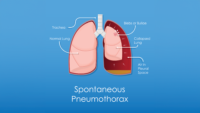With employer support, nurses can help each other after a colleague’s death.
Takeaways:
- The bonds created among nurses make the loss of a colleague difficult but also provide support during grief.
- Employers can help nurses work through the stages of grief by developing a plan that provides support and resources.
Editor’s note: This article is the last in a three-part series highlighting the work of the American Nurses Association Building Strength Through Resilience Committee, which has developed free online content that focuses on mental health promotion, suicide prevention, and grief (engage.healthynursehealthynation.org/blogs/10/3650). Access “Promoting nurse mental health” (myamericannurse.com/promoting-nurse-mental-health/) and “Nurse suicide prevention starts with crisis intervention” (myamericannurse.com/nurse-suicide-prevention-starts-with-crisis-intervention) online.
Nurses are drawn together through shared patient experiences, staffing challenges, stressful situations, and positive patient outcomes. Working long hours together, nurses learn about the lives of their coworkers beyond the walls of the organization. They become extended family. These bonds make the loss of a colleague extremely difficult, but a nursing team’s strong connections also provide support for coping with grief.
When a nursing colleague is lost to suicide, the fabric of the extended family is torn. The normal rhythm and flow of the workplace changes. Someone is missing from the shift. Even for nurses who are accustomed to loss of life at work, few are prepared for the loss of a friend and colleague, someone with whom they’ve shared the challenges and victories of patient care.
This article provides information for nurses, nurse leaders, and employers about the aftermath of a nurse colleague’s death by suicide, including navigating the grieving process and honoring the nurse’s memory.
Initial shock
Many nurses have difficulty allowing themselves to grieve the loss of their friend and colleague and continue to work in high-pressure work settings. However, no one can be expected to proceed with a shift at their highest level while trying to process the loss of a coworker, and suicide may make this even more difficult.
Individuals who experience a sudden loss may feel numbness, shock, and denial. Grief may manifest itself in feelings of despair, anguish, loss, anger, guilt, regret, and anxiety. Although these feelings are among the common reactions to the loss of a coworker, each nurse will have a unique grief journey. A study by Cerel and colleagues estimated that every suicide resulted in 135 people being exposed to the loss. Based on these findings, those experiencing grief may include many people who didn’t work directly with the nurse but are affected by the loss and may need support.
Stages of grief
Grief is something we all share. Meller and Wilson and Errasti-Ibarrondo have found that whether they experience the loss of a loved one, long-term patient, coworker, or friend, nurses’ grief may have some commonalities.
Several models depict the stages of grief, but the most notable is by Dr. Elisabeth Kübler-Ross. In 1969, Kübler‐Ross published her seminal work on the five stages of grief, On Death and Dying. Developed initially to explain the phases patients experience when coping with a terminal illness, Kübler‐Ross identified five unique stages of the process: denial, anger, bargaining, depression, and acceptance. Over time, two stages were added: shock and testing.
In the initial stage (shock), the grieving individual may experience feelings of disbelief or emotional numbness. This intense feeling frequently is handled as though the loss doesn’t exist. After shock begins to wear off, sorrow and anguish begin the second stage—denial. This common defense mechanism dulls the emotional shock of the news. This stage can consume the grieving person with sadness and remorse. They question whether they could have done something to prevent the event or they regret not taking the chance to make peace with the deceased.
These feelings of guilt frequently lead to resentment, which begins the anger stage. Many people experience rage and frustration exacerbated by a lack of control. They then begin to haggle in an attempt to negotiate the loss away with their psyche. This is the fourth stage of grief, bargaining.
Unfortunately, the inability to bargain away the loss and pain can lead to profound depression, which may result in self-imposed isolation and loneliness. Feelings of disconnectedness and loneliness are risk factors for self-harm and suicide.
Even during an overwhelming depressive state, reality eventually begins to approach. In the sixth stage of grief, testing, the bereaved person begins looking for realistic actions they can take to help their situation. The testing stage was added to address how grieving individuals begin to work their way out of their depressive state. They begin to feel as though they’re managing their loss. They become more hopeful about life until they finally reach stage seven, acceptance.
In the acceptance stage, the grieving person comes to terms with their loss. Acceptance includes recognizing a loss or death and understanding that their reality has changed. They now acknowledge and endure the need to develop a new functioning reality.
The grieving process is normal and individual grief is subjective. No concrete order exists for how individuals progress through the stages, and not everyone will or should go through each or even all of them. Corr and Stroebe and colleagues suggest that identifying stages for bereaved individuals can be harmful and should be done with caution. If a person who’s grieving believes they’ve skipped a stage, their healing process may be harmed.
Helping staff heal
When a nurse dies by suicide, employers should provide a well-coordinated response with clear goals and full organizational support. “Postvention” is defined by the National Action Alliance for Suicide Prevention’s Survivors of Suicide Loss Task Force as an “organized response in the aftermath of a suicide to accomplish any one or more of the following: to facilitate the healing of individuals from the grief and distress of suicide loss, to mitigate other negative effects of exposure to suicide, and to prevent suicide among people who are at high risk after exposure to suicide.’’
The suicide of a coworker may trigger suicidal thoughts in vulnerable nurses who are at risk of attempting suicide themselves. This is known as the contagion effect. (Learn more at suicidology.org/wp-content/uploads/2019/07/Managers-Guidebook-To-Suicide-Postvention.pdf.).
Employers can take many steps to achieve postvention goals. The process begins with compassionate acknowledgment of the loss, including any information the family agrees to share. (To maintain privacy and confidentiality, the cause of death shouldn’t be revealed without family approval.) Nurses should not hear the news through the grapevine.
All staff can benefit from sharing their feelings and having access to peer support. Employers should offer immediate and ongoing support, including mental health resources and crisis assessment. This vigilance includes nurses checking on one another. Consider an all-hands-on-deck approach with human resources, employee wellness, safety teams, employee assistance programs, and pastoral care.
Employers should provide necessary backup staffing so coworkers can attend funeral services as well as other opportunities for time off. Filling the vacant position of the nurse who has died should be a priority to reduce increased stress related to short staffing, which may compound the effects of the loss. Employers may want to offer continuing education on suicide prevention, mental health, nurse joy, and well-being.
Honoring their memory
The process of memorializing a colleague lost to suicide can be heart-breaking and challenging. The pandemic may make it even more difficult. However, honoring a nurse’s memory is vital to coworkers’ healing.
Nurse colleagues and employers might want to contact the nurse’s loved ones to determine their wishes, but they should do so respectfully to protect their privacy and confidentiality. Appointing one work colleague to reach out will prevent overwhelming the family. If appropriate, coworkers can attend the funeral or a fellow nurse or manager can speak at the service. However, the nurse and family may have religious beliefs that don’t allow coworkers to attend services, wakes, viewings, or other final gatherings, even when the pandemic is over. The family may reach decisions about including coworkers in services based on their own grief, having a large extended family and network of friends, a desire for an intimate farewell and privacy, or fear of disrespect or drama.
Nurses can still honor a colleague lost to suicide in many beautiful ways. For example, they can share a favorite memory or prayer in their honor at change of shift, include a short article in the organization’s newsletter (while maintaining privacy and confidentiality), post photos in the break room, place a memento in a special location, or send flowers, a note, or food to the nurse’s family. (See Honoring a lost colleague.)
Honoring a lost colleague
Units and healthcare organizations can honor the memory of a nurse lost to suicide in many ways.
- Plant a tree, flower, or shrub in the organization’s healing garden or elsewhere on the grounds.
- Establish a nursing scholarship.
- Host a work memorial service or moment.
- Dedicate a bench or piece of art or equipment in the nurse’s name.
- Hold a prayer vigil.
- Create and post a commemorative sign or plaque.
- Collect written memories and photos in a book for the family.
- Find out if the funeral home offers a special time for coworker visitation.
- Throw a “celebration of life” lunch or break.
- Remember the nurse in a religious ceremony or online service.
Many families appreciate a charity donation. Consider donations to
- nurse-specific charities, such as the American Nurses Foundation or Nurses House
- a research association dedicated to finding a cure for a specific disease
- a charity the deceased nurse supported
- your favorite charity.
In 2005, the American Nurses Association (ANA) established the Nightingale Tribute to honor deceased ANA colleagues. Each nurse is honored at ANA’s annual Membership Assembly with a white rose and lighted candle, while the names of those lost from the previous year scroll on a screen. In addition, Duane Jaeger’s poem “She Was There,” which honors nurse service, is read.
Some healthcare organizations and nursing associations have a Nurse Honor Guard. The volunteers who serve on the honor guard may wear a traditional all-white nursing uniform, a navy blue cape, or their nursing caps while standing vigil at the deceased’s side at the funeral home, service, or graveside. Prayers, the Nightingale pledge, or Jaeger’s poem may be recited, and a candle or “Nightingale lamp” may be lit.
The most important takeaway is that a life is being honored. This was a life marked by service to others. Honoring the memory of a nurse provides a powerful opportunity to celebrate this special life individually and collectively, including with the nurse’s family. Suicide doesn’t diminish the importance of this celebration.
Heal together
The death of a nurse by suicide can have profound and long-lasting effects on their colleagues. With support from employers and each other, nurses can heal together. For in-depth resources on this and other nurse suicide–related topics, visit nursingworld.org/practice-policy/nurse-suicide-prevention. If you have thoughts of suicide or self-harm, call the National Suicide Prevention Lifeline: 1 800-273-TALK.
This content is general in nature and does not constitute legal or medical advice. Laws vary by jurisdiction, locality, state, or country; please follow the laws of your specific jurisdiction and consult with an attorney if you have any questions regarding the laws of your jurisdiction. This can be particularly important when and if sharing information following a death from suicide.
Access references at myamericannurse.com/?p=73288.
Matthew S. Howard is the director of scholarship and leadership resources at Sigma in Indianapolis, Indiana. Michelle Buck is the APRN senior policy advisor for the National Council of State Boards of Nursing in Chicago, Illinois. Holly Carpenter and Kendra McMillan are senior policy advisors in the nursing practice and work environment department at the American Nurses Association in Silver Spring, Maryland.
References
Accardi R, Davidson JE, Sanchez C, Zisook S, Howard MS. Nurse suicide and prevention: SigmaCast, Episode 11. Sigma Repository. 2020. sigma.nursingrepository.org/handle/10755/20872
American Nurses Association. Nurse suicide prevention/resilience. 2020. nursingworld.org/practice-policy/nurse-suicide-prevention
ANA Enterprise. Nightingale tribute: Recognizing our fallen heroes. 2020. nursingworld.org/ana/about-ana/nightingale-tribute
Carson J. Spencer Foundation, Crisis Care Network, National Action Alliance for Suicide Prevention and American Association of Suicidology. A Manager’s Guide to Suicide Postvention in the Workplace: 10 Action Steps for Dealing with the Aftermath of Suicide. Denver, CO: Carson J. Spencer Foundation; 2013. suicidology.org/wp-content/uploads/2019/07/Managers-Guidebook-To-Suicide-Postvention.pdf
Cerel J, Brown MM, Maple M, et al. How many people are exposed to suicide? Not six. Suicide Life Threat Behav. 2019;49(2):529-34. doi:0.1111/sltb.12450
Corr CA. Elisabeth Kübler-Ross and the “Five Stages” model in a sampling of recent American textbooks. Omega. 2020;82(2):294-322. doi:10.1177/0030222818809766
Corr CA. Let’s stop “staging” persons who are coping with loss. Illness, Crisis & Loss. 2015;23(3):226-41. doi:10.1177/1054137315585423
Davidson JE, Proudfoot J, Lee K, Terterian G, Zisook S. A longitudinal analysis of nurse suicide in the United States (2005–2016) with recommendations for action. Worldviews on Evid Based Nurs. 2020;17(1):6-15. doi:10.1111/wvn.12419
Iglewicz A, Shear MK, Reynolds CF, Simon N, Lebowitz B, Zisook S. Complicated grief therapy for clinicians: An evidence-based protocol for mental health practice. Depress Anxiety. 2019; 37(1):90-8. doi:10.1002/da.22965
Kübler-Ross E. On Death and Dying. New York, NY: Macmillan; 1969.
Kübler-Ross E, Kessler D. On Grief and Grieving: Finding the Meaning of Grief Through the Five Stages of Loss. New York, NY: Scribner; 2005.
Meller N. “Putting your nurse face on”: Nurses managing grief in the workplace. Sigma Repository. 2018. sigma.nursingrepository.org/handle/10755/16194
Mercy Cedar Rapids. Nursing honor guard. mercycare.org/volunteer-opportunities/where-can-i-volunteer/mercy-nursing-honor-guard
National Action Alliance for Suicide Prevention. Responding to Grief, Trauma, and Distress After a Suicide: U.S. National Guidelines. April 2015. https://theactionalliance.org/sites/default/files/inline-files/NationalGuidelines.pdf
Phipps CB. Metamorphosis: An autoethnographic journey through loss, grief, and perceived identity changes. J Loss Trauma. 2018;23(6):458-67. doi:10.1080/15325024.2018.1475138
Prescott-Wieneke H. A nurse’s tribute: Nurses honor colleagues at time of their death. Beacon Health System. February 18, 2020. beaconhealthsystem.org/news/2020/02/18/a-nurses-tribute-nurses-honor-colleagues-at-time-of-their-death
Stroebe M, Schut H, Boerner K. Cautioning health-care professionals: Bereaved persons are misguided through the stages of grief. Omega. 2017;74(4):455-73. doi:10.1177/0030222817691870
Westerlund MU. The usage of digital resources by Swedish suicide bereaved in their grief work: A survey study. Omega. 2020;81(2):272-97. doi:10.1177/0030222818765807
Wilson DM, Errasti-Ibarrondo B. A literature review to determine how bereavement support or grief recovery programs are evaluated. 2019. sigma.nursingrepository.org/handle/10755/18128


















1 Comment.
Thanks for an informative article